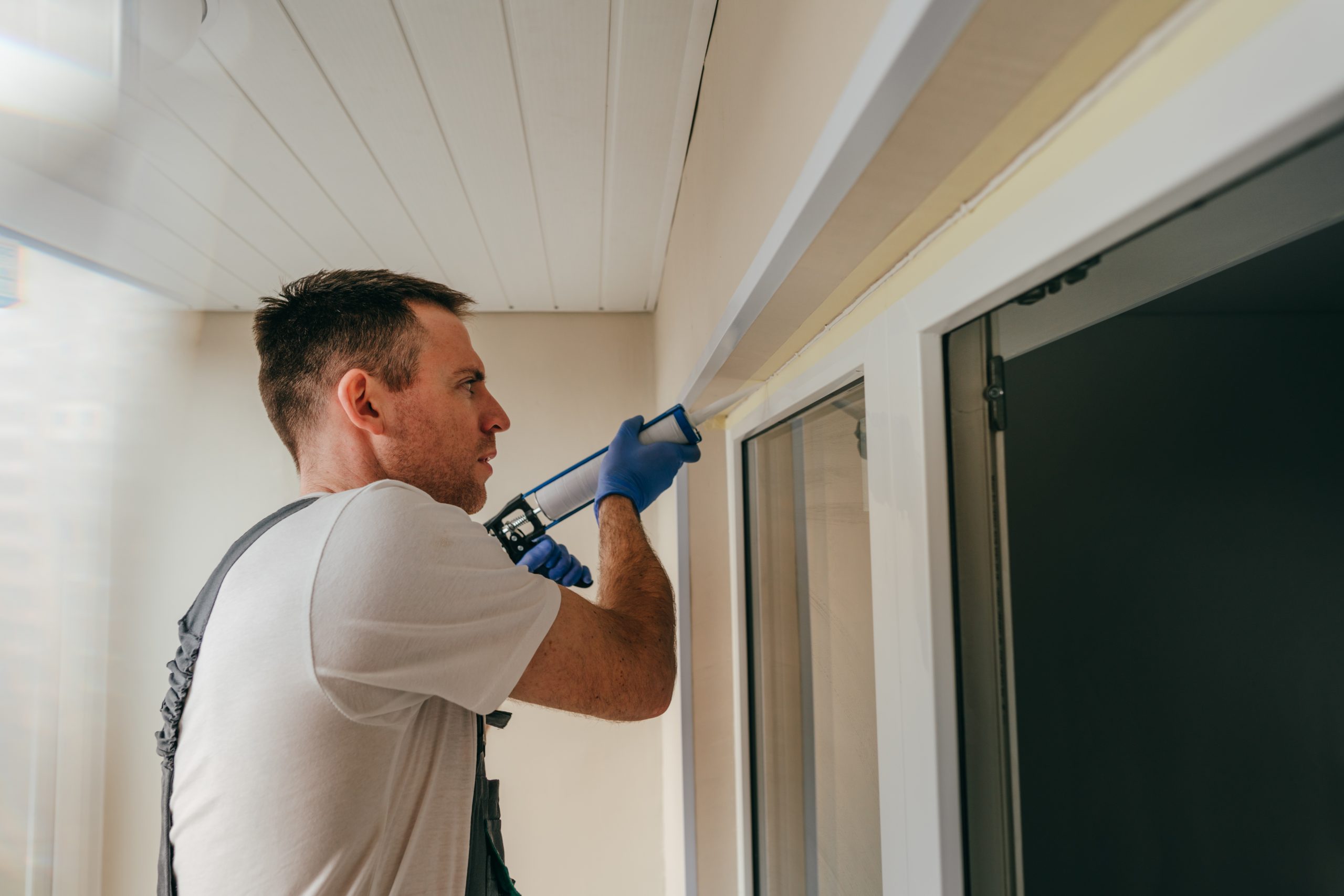Sealing your windows properly is one of the easiest ways to make your home more energy efficient, prevent drafts, and protect against moisture damage. But not all caulking is the same. There’s a key difference between interior and exterior window caulking—and knowing when and where to use each can make a big impact on your home’s comfort and air quality.
Here’s a full breakdown to help you understand interior vs exterior window caulking, including where to apply it, what sealant types to use, and how it helps with energy savings and indoor air quality.
Interior vs Exterior Window Caulking: What’s the Real Difference?
The main difference is location and purpose:
- Interior caulking is used inside your home, around window trim, frames, and sills. It helps block air leaks, improve indoor air quality, and reduce dust and allergens.
- Exterior caulking is applied outside, between the window frame and the siding or masonry. It prevents rain, wind, and insects from entering your walls.
Each type of caulking faces different conditions. That’s why they require different products and methods.
Best Caulking Locations for Interior Use
Use interior caulking in areas that are climate-controlled and not exposed to harsh weather. Ideal locations include:
- Along the interior window trim
- Where the frame meets the wall
- Base of window sills and apron joints
- Small gaps that allow airflow or dust inside
Interior caulking helps:
- Stop indoor drafts
- Lower heating and cooling costs
- Improve indoor air quality
- Block out pollen, dust, and allergens
Where to Use Exterior Window Caulking
Exterior caulking seals the outside of your window to keep out water, pests, and wind. Check these spots:
- Between the window frame and exterior siding
- Around outside edges of the window sill
- Where brick or stucco meets the window casing
- Any visible gap or crack around the outer window
Exterior caulking is your first line of defense against:
- Moisture damage and mold
- Insect entry points
- Cold air and water leaks
- Exterior paint damage and rotting wood
Sealant Types: What to Use Indoors vs Outdoors
Not all caulking products are made for the same job. Choosing the right one matters:
- Interior caulking: Use paintable latex or acrylic caulk. It’s low in VOCs (chemicals that affect indoor air), easy to clean, and good for small gaps.
- Exterior caulking: Choose a durable silicone or polyurethane caulk. These are waterproof, flexible, and can handle extreme weather.
Avoid using interior-only caulks outdoors—they’ll crack and peel. And never use exterior-grade caulk with strong fumes indoors, as it can affect air quality.
Why Both Interior and Exterior Caulking Matter
You might be wondering—should you caulk inside or outside? The answer is both. A full seal involves:
- Exterior caulking to stop moisture and outside air
- Interior caulking to reduce indoor air leaks and energy loss
Together, they work as a complete system to:
- Lower your utility bills
- Protect your window structure from rot and mold
- Create a healthier indoor environment
- Extend the life of your windows
Signs You Need to Re-Caulk Windows
- You feel drafts even when windows are shut
- You notice visible cracks or gaps in the caulk
- Caulk is peeling, brittle, or missing altogether
- You see moisture, condensation, or mold around windows
If you notice these signs, it’s time to schedule a window sealing inspection or request a quote for home window sealing.
DIY or Hire a Pro?
Interior caulking can be a simple weekend project. But exterior caulking often involves ladders, precise application, and the right sealant. To ensure the job is done safely and correctly, many homeowners hire window caulking professionals near them to handle both interior and exterior sealing.
Professionals can:
- Identify the correct caulking locations
- Use weather-appropriate sealants
- Improve energy efficiency and prevent leaks
- Offer energy-efficient window caulking solutions tailored to your home
Getting Started
Live in Oshawa, Ajax, Pickering, or Toronto? Kettle Contracting offers expert interior and exterior window caulking services to keep your home protected, energy-efficient, and draft-free. Whether you want to book an exterior window caulking service, compare window sealant types, or simply improve indoor air quality, we’re here to help.
Contact Kettle Contracting today to get a quote, schedule your window sealing inspection, and seal in the comfort your home deserves.
Authority & Citations:


